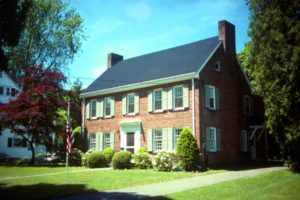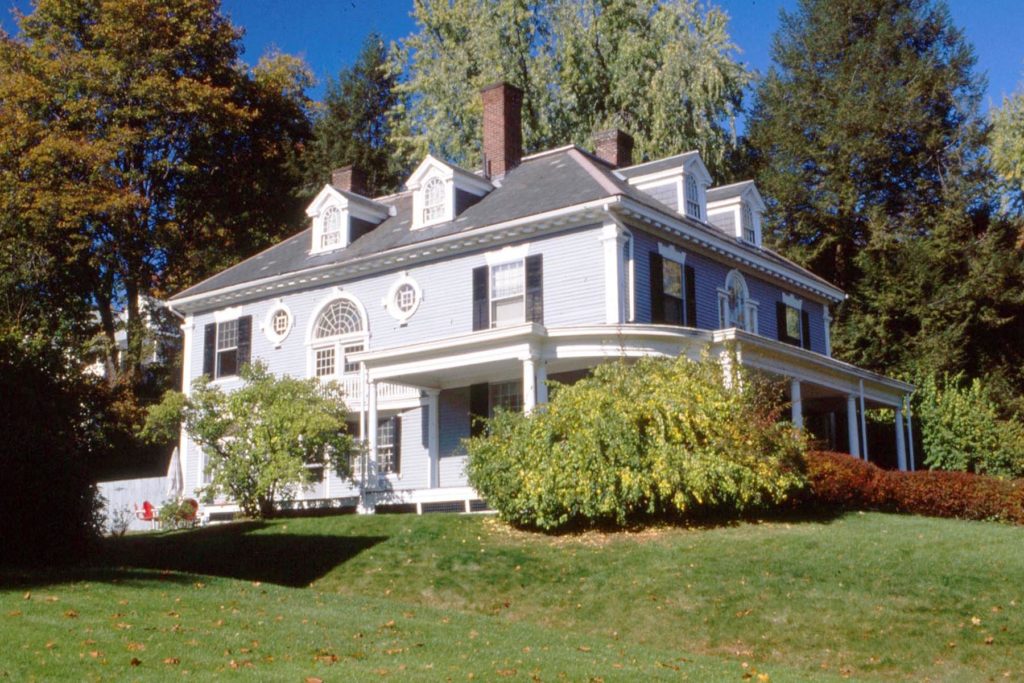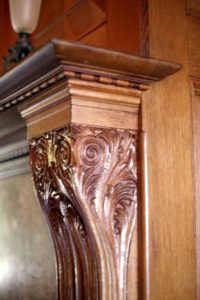The Colonial Revival Style in America, captured the imagination and inspired generations of architects and home owners to revisit the classically based architectural style common during our early American history.
The Colonial Revival manifests the awakened interest in America’s, and especially New England’s, colonial heritage. First stimulated by the centennial celebrations of 1876, the style became dominant in domestic designs in the 20th century. The style is classically based, as was the Georgian and Federal styles which have inspired it.

Wood and brick are the favored building materials, and the elements of colonial design included porches with classical columns, entrance doors with sidelights or fanlights, 6/6 double hung sash, quoins or pilasters supporting classical cornices and dormers with pediments. The massing of the houses resemble Georgian and Federal era originals, but frequently the scale is larger. The forms are usually two story and rectangular, with gable roofs parallel to the main facade, square with hip roofs, gambrel roof versions we call Dutch Colonial or the one story Cape Cod revivals.
Symmetry is the rule, although the main entrance may be off center. The floor plans, too, revert to those known in the 18th century; center hall plans predominate.

In the late 19th and early 20th century Colonial Revival ornamentation, especially on entrances and dormers, was exaggerated, but by the 1920s, very accurate reproductions of colonial design appeared, especially in New England.
The hip roofed variations are drawn from Georgian sources and were most popular circa 1900-1915. They are also known as the classic box or the American four-square. Some are very plain with a wide, flat cornice and one dormer in each face of the high hip, while others may have much Colonial Revival detailing including Palladian windows, leaded glass sidelights at the door and a classically columned porch.

The most common type is the two story five-bay with centered entrance. The restoration of Colonial Williamsburg, opened in 1928, stimulated many red brick colonials with end chimneys and dormers in the Virginia fashion. Dutch Colonials are identified by the four-plane gambrel roof which enclosed the second story, but otherwise bear little resemblance to Dutch originals.

Most Colonial Revivals can be distinguished from the authentic by a mixing of stylistic details taken from Georgian, Federal or even Greek Revival sources and used together on a single design. Another key is the use of many high-style details on a modest sized house, such as scroll-pediment entrances or elaborate dormers and multiple chimneys.
The Colonial Revival in all its variations comprises a very large part of the 20th century housing stock.
From Our Trusted Partners
Featured property



